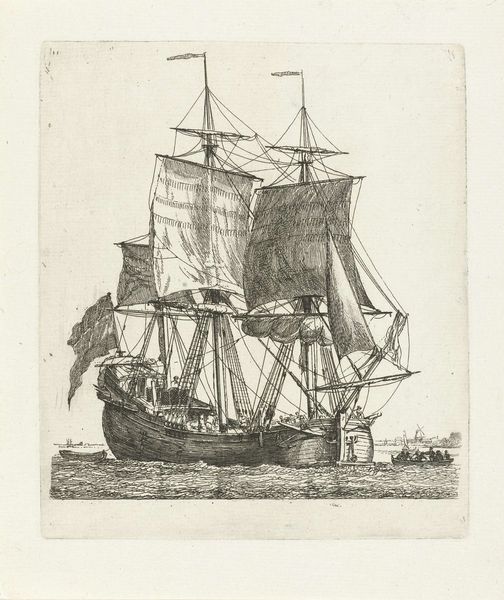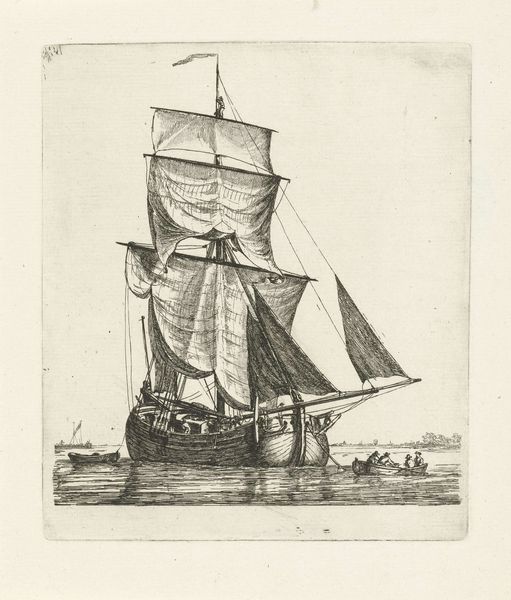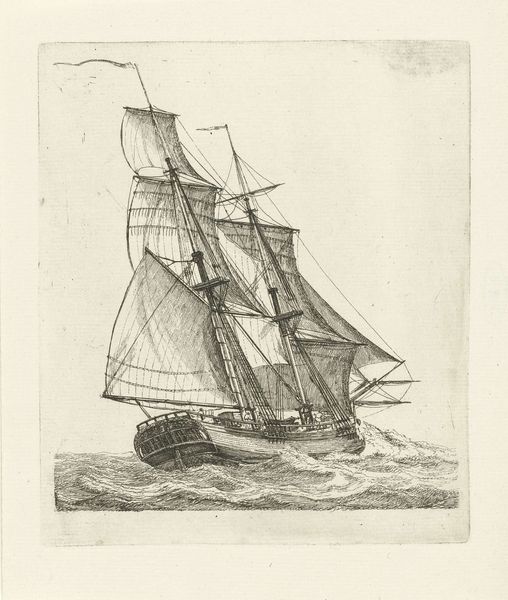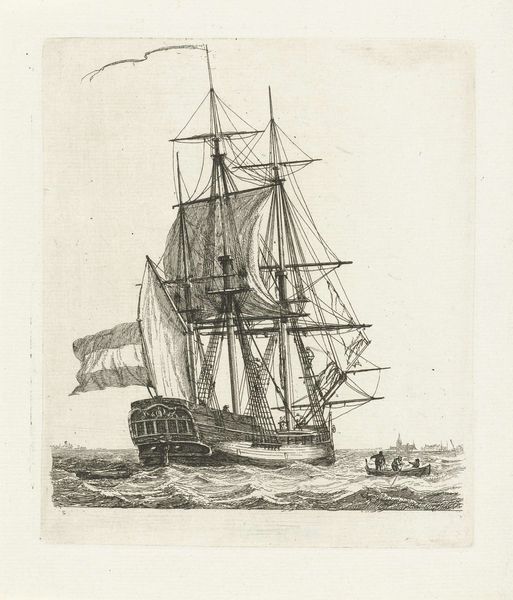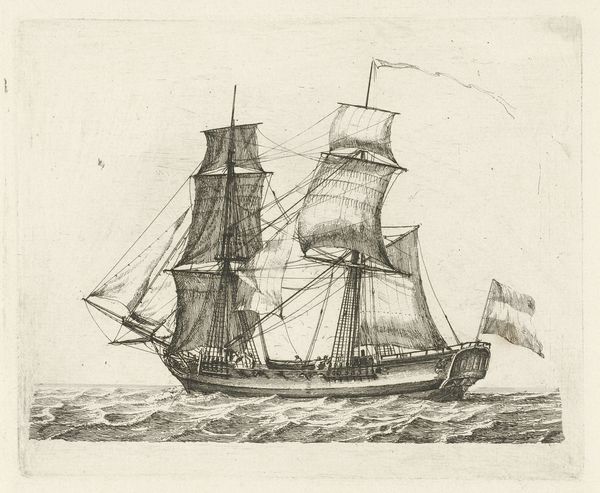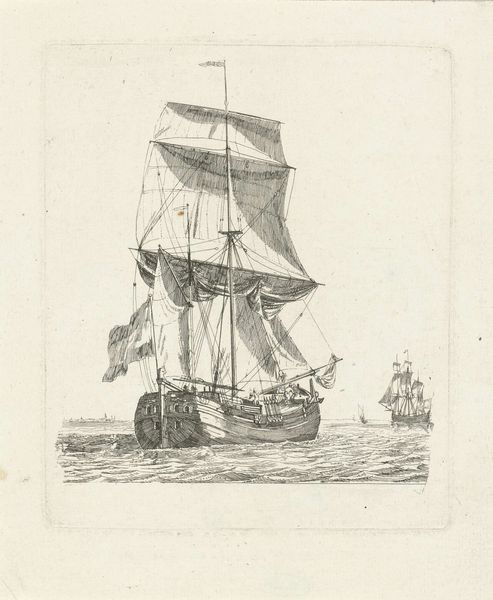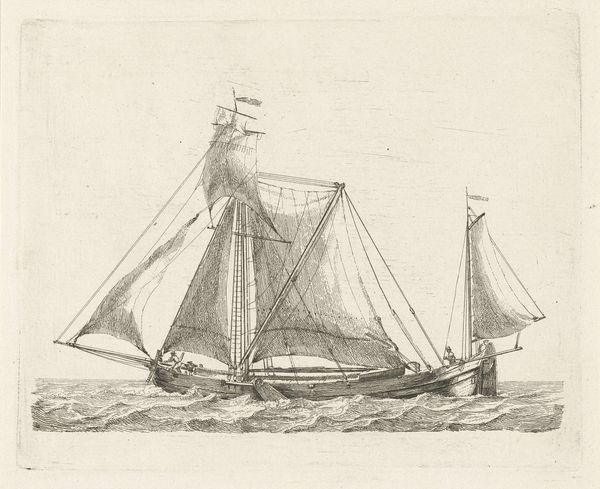
drawing, print, etching, engraving
#
drawing
#
light pencil work
#
quirky sketch
# print
#
pen sketch
#
etching
#
pencil sketch
#
landscape
#
form
#
personal sketchbook
#
idea generation sketch
#
sketchwork
#
pen-ink sketch
#
line
#
sketchbook drawing
#
cityscape
#
engraving
#
realism
#
initial sketch
Dimensions: height 151 mm, width 129 mm
Copyright: Rijks Museum: Open Domain
Gerrit Groenewegen made this print of a three-master ship using etching, sometime in the late 18th or early 19th century. The effect of an etching lies in its linework, a direct result of the artist’s hand drawing through a waxy ground on a metal plate. When the plate is bathed in acid, the exposed lines are eaten away, leaving an image that can be inked and printed. The etcher has control over the fineness and depth of the line, but chance also plays a role; the acid bites where it will. Here, the thin lines capture the ship's rigging, sails, and the choppy sea with impressive detail, considering the print's small size. Yet beyond technique, consider the social context. This was the age of maritime trade, and the ship was a crucial instrument of global commerce, with all the labor and economic exchange that implies. In its own way, this etching, though modest in scale, testifies to the power of materials, process, and context in giving meaning to art.
Comments
No comments
Be the first to comment and join the conversation on the ultimate creative platform.
